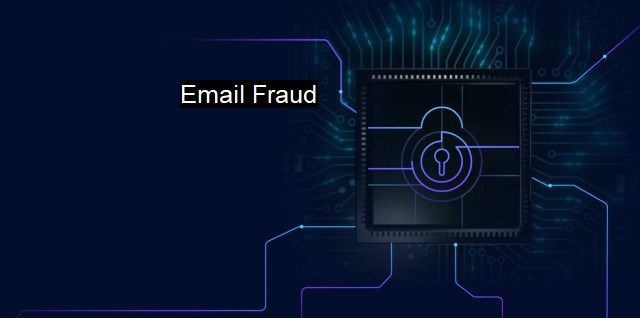What is Email Fraud?
Email Fraud: Understanding the Threats, Risks, and Solutions for Secure Communication
Email fraud, also often referred to as phishing, is a deceptive yet commonly used cybersecurity threat that is a leading concern for individuals and businesses worldwide. Addressing it requires a strong understanding of its characteristics, impacts, and solutions, as effective cybersecurity and antivirus measures can only be built upon such knowledge.Describing email fraud, its essence lies in sending deceitful emails to lure recipients into carrying out harmful actions. The messenger, often disguised as a trustworthy entity, may attempt to persuade the receiver to share sensitive details such as passwords, or click on links that trigger the installation of malicious software. Some aim to convince individuals to wire finances to seemingly legitimate causes. The creativity and cunningness in email fraud are only bound by the imaginations of their unscrupulous authors.
Most email fraud instances can be categorized into spear-phishing and whaling, which are targeted attacks on specific individuals; and phishing, where large numbers of emails are sent in the hope that some recipients will fall prey. Regardless of the type, all email frauds are anchored on a common strategy: manipulation and deception.
From a cybersecurity perspective, email fraud poses significant threats. It carries the potential to bypass traditional antivirus software due to the heavy reliance on human error and manipulation, as opposed to direct system penetration attempts. The malicious codes either come as file attachments containing viruses or worms or transports the individual to external sites where such malware awaits.
An infection to one's device can then establish a backdoor, a remote control for fraudsters to steal data, seize system control, demand ransoms, and implement other harmful actions. Globally, businesses face an annual loss of over $3 billion due to such threats, underlining the financial repercussions attached to email cybercrime.
Victims can also land themselves in legal trouble if their hijacked systems are used for illegal activities, or face reputational damage if client data is leaked. businesses might lose vast amounts of valuable work time attempting to clean up post-attack messes. The emotional stress extends not just to the direct victims but also those repairing the damage.
Underscoring the multiple layers of consequences, it is clear why email fraud is a cybersecurity priority and why antivirus and anti-fraud programs should aim to reduce the risk of it ever happening.
In terms of solutions, email security starts at the primary level with awareness and education. Organizations should design measures that help them recognize phishing emails and make online transactions securely. They should avoid sharing sensitive information via email and clicking on unfamiliar links. Instead, directly log into the official website by retyping the URL.
On a secondary level, increasing cybersecurity sophistication and fostering contingency plans is key. Organizations could invest in advanced antivirus software and email-filtering tools to weed out suspicious messages. These tools typically rely on AI and machine learning approaches to study patterns and improve their efficiency.
To proactively address the issue, fraud detection measures and threat intelligence can identify common characteristics of malicious emails to help spot them in the future. Employing services that use DKIM, SPF, and DMARC, which aim to authenticate the senders can also verify if the sender's domain is what it claims to be.
Preparedness should be embraced as well. Suppose a firewall fails to prevent an attack or if a stealthy attacker manages to infiltrate the defenses. In that case, effective backup strategies, encryption, and redundant provisions can prevent significant material losses.
Email fraud is a matter that requires urgent attention given the current rate of digitalization and the corresponding threats. There is no single solution fail-safe against email fraud attacks, but by creating a multilayered approach, we can form an environment that is overwhelmingly inconvenient for attackers. It boils down to how much effort we put into barricading our virtual doors and ensuring our passwords, so to speak, are left unspoken, thus shielding our information from those who pose threats in the vast digital ecosystem.

Email Fraud FAQs
What is email fraud?
Email fraud is a type of cybercrime where fraudulent emails are sent to individuals or businesses with the aim of tricking them into providing sensitive information or making a financial transaction.How can I protect myself from email fraud?
You can protect yourself from email fraud by being cautious when receiving emails from unfamiliar senders, avoiding clicking on links or downloading attachments from suspicious emails, and using antivirus software to scan your emails for potential threats.What are some common email fraud tactics?
Some common email fraud tactics include phishing emails that impersonate legitimate companies or individuals, social engineering emails that attempt to manipulate the recipient into revealing sensitive information, and malware-laden emails that infect the recipient's computer when opened.What should I do if I suspect an email is fraudulent?
If you suspect an email is fraudulent, do not click on any links or download any attachments. Instead, report the email as spam or phishing to your email provider or IT department. You can also forward the email to authorities such as the Federal Trade Commission or the Internet Crime Complaint Center (IC3).| | A | | | B | | | C | | | D | | | E | | | F | | | G | | | H | | | I | | | J | | | K | | | L | | | M | |
| | N | | | O | | | P | | | Q | | | R | | | S | | | T | | | U | | | V | | | W | | | X | | | Y | | | Z | |
| | 1 | | | 2 | | | 3 | | | 4 | | | 7 | | | 8 | | |||||||